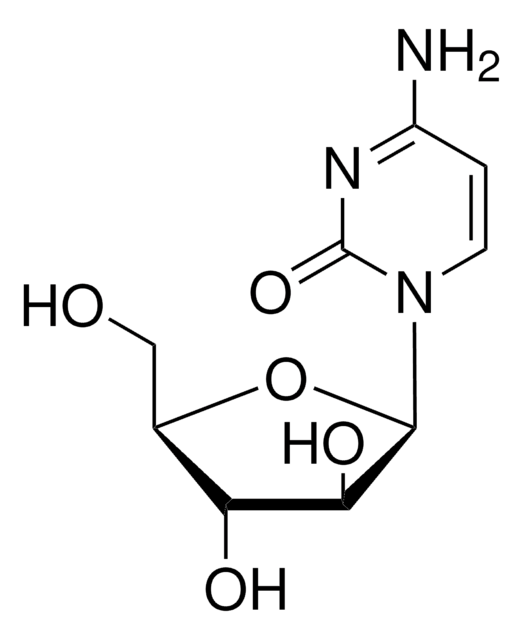추천 제품
제품명
Poly-D-lysine hydrobromide, mol wt 70,000-150,000
양식
solid
분자량
70,000-150,000
기술
cell culture | mammalian: suitable
불순물
<10% water (Karl Fischer)
색상
white to off-white
solubility
water: 50 mg/mL, clear, colorless to very faintly yellow
작용기
amide
저장 온도
−20°C
SMILES string
O=C(C)[C@@](NC)([H])CCCCN.[Br]
InChI
1S/C6H14N2O2.BrH/c7-4-2-1-3-5(8)6(9)10;/h5H,1-4,7-8H2,(H,9,10);1H
InChI key
MEXAGTSTSPYCEP-UHFFFAOYSA-N
유사한 제품을 찾으십니까? 방문 제품 비교 안내
일반 설명
애플리케이션
- Used in animal cell culture
- Rat cortical neuron cultures
- Cell culture and siRNA treatment
- Primary cell cultures and adult neuronal network model
- Cortical astrocyte culture
- Immunofluorescence staining (HDF cells were plated onto poly-D lysine (P0899, Sigma-Aldrich) coated glass coverslips)
- NPC collection and culture conditions
This product is recommended as a cell culture substratum when using 0.5 - 1.0 mL of a 0.1 mg/mL solution to coat 25 cm2. Lower molecular weight versions of the product are less viscous, but high more molecular weight versions provide more attachment sites per molecule.
생화학적/생리학적 작용
특징 및 장점
- Suitable for Cell Culture and Biochemical research
- High-quality compound suitable for multiple research applications
성분
주의사항
분석 메모
기타 정보
Storage Class Code
11 - Combustible Solids
WGK
WGK 3
Flash Point (°F)
Not applicable
Flash Point (°C)
Not applicable
개인 보호 장비
Eyeshields, Gloves, type N95 (US)
이미 열람한 고객
문서
Humankind has utilized protein materials throughout its existence, starting with the use of materials such as wool and silk for warmth and protection from the elements and continuing with the use of recombinant DNA techniques to synthesize proteins with unique and useful properties.
자사의 과학자팀은 생명 과학, 재료 과학, 화학 합성, 크로마토그래피, 분석 및 기타 많은 영역을 포함한 모든 과학 분야에 경험이 있습니다..
고객지원팀으로 연락바랍니다.







